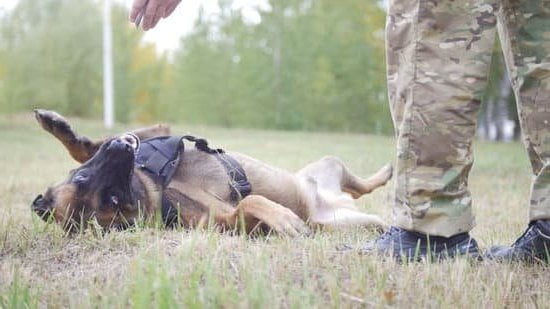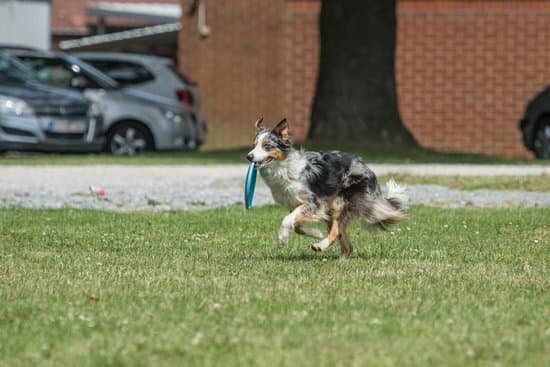Dogs are not only our best friends, but they can also be trained to detect and help individuals experiencing panic attacks. In this article, we will explore the fascinating world of training dogs to sense panic attacks. From understanding the science behind their abilities to selecting the right breed for training, we will delve into the essential steps needed to train a dog effectively in this crucial skill.
Learning how to train a dog to sense panic attacks can be a life-changing experience for individuals living with anxiety disorders. Dogs have an incredible ability to pick up on subtle changes in body language, scent, and behavior that signal an impending panic attack. By harnessing this natural instinct, we can empower our furry companions to provide invaluable support during times of distress.
Not all dog breeds are equally suited for this specialized training. Selecting the right breed with a keen sense of smell and intuition is crucial for successful detection. Building a strong bond with your dog is also essential in enhancing their detection abilities and ensuring effective communication between you both during moments of crisis. Let’s explore further how this unique partnership between humans and dogs can make a significant impact on managing panic disorders.
The Science Behind a Dog’s Ability to Sense Panic Attacks
Dogs have an amazing ability to sense subtle changes in their human’s behavior and physical state, making them ideal companions for individuals suffering from panic attacks. The science behind a dog’s ability to detect panic attacks lies in their acute sense of smell and keen observation skills. Research has shown that dogs can pick up on changes in hormones, chemicals, and even subtle shifts in body language that indicate a person is experiencing heightened anxiety or stress.
The Role of Olfactory Receptors
One of the key factors in a dog’s ability to sense panic attacks is their powerful olfactory receptors. Dogs have up to 300 million olfactory receptors in their noses, compared to about 6 million in humans.
This extraordinary sense of smell allows them to detect even trace amounts of specific chemicals released by the body during periods of anxiety or stress. By recognizing these scent cues, dogs can preemptively alert their owners and provide comfort before a full-blown panic attack occurs.
Understanding Behavioral Cues
In addition to their exceptional sense of smell, dogs are also highly attuned to changes in human behavior. They are skilled at picking up on subtle cues such as increased heart rate, shallow breathing, fidgeting, or repetitive movements that often accompany feelings of panic.
Through careful observation and training, dogs can learn to associate these behaviors with an impending panic attack and respond accordingly. By understanding both scent cues and behavioral signals, dogs can offer invaluable support to individuals struggling with anxiety disorders.
By harnessing the innate abilities of dogs and understanding the science behind their remarkable sensory perception, individuals can effectively train their canine companions to detect and respond to panic attacks. Through a combination of proper selection, bonding techniques, training methods, positive reinforcement strategies, simulated exercises, and ongoing care for the dog’s well-being, owners can empower their furry friends to become reliable partners in managing panic disorders.
Training a dog to sense panic attacks not only provides practical assistance but also cultivates a deep bond between human and animal based on trust, empathy, and mutual support.
Selecting the Right Dog Breed for Training
Dogs are known for their incredible sense of smell and intuition, which makes them ideal candidates for detecting panic attacks in individuals. However, not all dog breeds have the same level of sensitivity or training potential when it comes to sensing panic attacks. When selecting a dog breed for this specialized training, it is essential to consider certain factors that can contribute to the success of the training process.
One key factor to consider is the breed’s natural abilities and tendencies. Breeds such as Golden Retrievers, German Shepherds, and Labrador Retrievers are often preferred for their intelligence, trainability, and empathy towards their owners’ emotions. These breeds have shown remarkable success in detecting changes in human behavior and responding accordingly.
Additionally, the size of the dog can also play a role in its ability to sense panic attacks effectively. Smaller breeds may struggle to provide physical support during an attack, while larger breeds may offer more stability and comfort to their owners. It is essential to choose a dog that not only has the right temperament but also fits well with the individual’s lifestyle and needs.
Training a dog to sense panic attacks requires patience, consistency, and dedication from both the owner and the pet. By selecting the right breed based on its innate qualities and characteristics, you can set a strong foundation for successful training outcomes. Remember that every dog is unique, so understanding your pet’s strengths and weaknesses is crucial in shaping them into reliable companions during challenging times.
| Factors to Consider | Examples |
|---|---|
| Natural Abilities | Golden Retrievers, German Shepherds |
| Size | Larger breeds for physical support |
Building a Bond With Your Dog to Enhance Detection Abilities
Building a strong bond with your dog is crucial when training them to sense panic attacks. Dogs are incredibly intuitive animals, and they can pick up on subtle changes in your behavior and emotions. By establishing a close connection with your dog, you can enhance their detection abilities and improve their response to your panic attacks.
One of the first steps in building a bond with your dog is through consistent training and positive reinforcement. Spend time with your dog every day, engaging in activities that they enjoy, such as playing fetch or going for walks. This quality time together will help strengthen the trust and communication between you and your furry companion, making it easier for them to pick up on any signs of distress or panic.
Additionally, it’s important to create a safe and comfortable environment for your dog at home. Providing them with their own space, regular meals, exercise, and mental stimulation will contribute to their overall well-being and happiness.
A happy and content dog is more likely to be attentive and responsive to your needs, including sensing when you are experiencing a panic attack. By prioritizing your dog’s physical and emotional health, you are setting them up for success in detecting and responding to your panic episodes effectively.
Training Techniques
Dogs have an incredible ability to sense changes in human behavior and emotions, which makes them perfect candidates for detecting panic attacks. To train your dog to recognize the signs of a panic attack, you will need to start by establishing a strong bond with your furry companion. This bond is crucial as it forms the foundation for effective communication and understanding between you and your dog.
One effective training technique is to expose your dog to various scenarios that mimic the behaviors and physical changes associated with panic attacks. By using positive reinforcement such as treats or praise, you can teach your dog to associate these specific cues with the need for alertness and attention towards you. Consistency is key during training sessions, so make sure to practice regularly and provide continuous feedback to reinforce the desired behavior in your dog.
It is important to remember that each dog is unique, so it may take time and patience to fully train your canine companion to accurately detect panic attacks. Additionally, seeking guidance from professional trainers or behaviorists can also be beneficial in designing a customized training plan based on your dog’s individual characteristics and learning style. By investing time and effort into training your dog, you can potentially save lives and provide invaluable support for individuals struggling with panic disorders.
| Key Points | Details |
|---|---|
| Training Techniques | Positive reinforcement like treats can help teach dogs to recognize panic attack signs. |
| Consistency | Regular practice sessions are essential for reinforcing desired behaviors in dogs. |
| Professional Guidance | Seeking advice from trainers or behaviorists can aid in creating an effective training plan. |
Implementing Positive Reinforcement to Reward Correct Detection Behaviors
Dogs have a remarkable ability to sense changes in their owner’s physical and emotional state, making them invaluable companions for individuals with panic disorders. By harnessing this innate skill, it is possible to train a dog to detect the onset of a panic attack and provide assistance or support during these challenging moments. Implementing positive reinforcement techniques is crucial in developing and reinforcing the correct detection behaviors in your canine companion.
To effectively train a dog to sense panic attacks, it is essential to establish clear communication and create a strong bond with your furry friend. Positive reinforcement, such as treats, toys, or verbal praise, can be used to reward your dog when they exhibit behaviors that indicate they are detecting a panic attack. Consistency is key when using this training method – make sure to reward your dog immediately after they correctly identify the signs of an impending panic attack.
Here are some effective ways to implement positive reinforcement during the training process:
- Use high-value treats: Choose treats that are especially appealing to your dog and reserve them exclusively for training sessions related to detecting panic attacks.
- Incorporate playtime: Use play as a form of positive reinforcement, engaging in games or activities that your dog enjoys after they successfully detect signs of distress.
- Verbal cues and praise: In addition to treats and play, verbal praise can also be an effective way to reinforce correct detection behaviors. Use consistent phrases like “good job” or “well done” when your dog responds appropriately during training sessions.
Practicing Simulated Panic Attacks to Refine Detection Skills
Establishing a Safe Environment
Before diving into training your dog to sense panic attacks through simulated scenarios, it is crucial to ensure that the environment is safe for both you and your canine companion. Choose a quiet and familiar space where your dog feels comfortable and at ease. Eliminate any potential distractions that may hinder the training process. It’s important to create a calm atmosphere for effective learning.
Creating Realistic Scenarios
To effectively train your dog to sense panic attacks, it is essential to create realistic scenarios that mimic actual panic attack symptoms. Begin by inducing mild stress or anxiety in yourself through deep breathing exercises or visualization techniques. Pay attention to the physical cues associated with a panic attack, such as increased heart rate, sweating, trembling, or shallow breathing. Your dog will learn to detect these subtle changes in your behavior when they occur.
Reinforcing Correct Responses
During the simulated panic attacks, observe your dog’s behavior closely for any signs of recognition or alertness to your distress. When your dog correctly identifies the onset of a panic attack, immediately reward them with praise, treats, or their favorite toy. Positive reinforcement is key to reinforcing correct detection behaviors in your dog. Consistent rewards will help solidify their training and encourage them to respond appropriately in real-life situations.
By regularly practicing simulated panic attacks with your furry friend, you can refine their detection skills and strengthen the bond between you both. Remember to maintain patience and consistency throughout the training process. With dedication and proper guidance, you can train your dog to sense panic attacks effectively and provide invaluable support during times of need.
Off-Duty Maintenance
Dogs trained to sense panic attacks play a crucial role in providing support and assistance to individuals with anxiety disorders. However, it is essential to prioritize the well-being and mental health of these amazing companions even when they are not on duty. Here are some key practices to ensure your dog remains healthy and happy:
- Regular Exercise: Just like humans, dogs require physical activity to stay fit and maintain good health. Make sure your trained dog gets enough exercise through walks, playtime, or other activities that suit their breed and energy level.
- Proper Nutrition: A balanced diet is essential for your dog’s overall well-being. Consult with your veterinarian to determine the best food options for your trained companion, taking into account factors such as age, size, and any specific health needs.
- Mental Stimulation: Keeping your dog mentally engaged is important to prevent boredom and potential behavioral issues. Provide toys, puzzles, or training sessions that challenge their mind and keep them stimulated.
In addition to physical care, it is crucial to attend to your dog’s emotional needs as well. Dogs trained to sense panic attacks may experience stress or anxiety themselves, especially in high-pressure situations. As their owner and handler, it is vital to create a supportive environment that promotes their mental well-being:
- Positivity and Encouragement: Maintain a positive relationship with your dog by offering praise, rewards, and affection for their hard work during training sessions or actual panic attack interventions.
- Maintaining Routine: Dogs thrive on routine and consistency. Establish a predictable schedule for feeding, exercise, training, and rest to provide structure and stability in their daily life.
- Regular Check-ups: Schedule regular veterinarian visits to ensure your dog’s physical health is optimal. Address any concerns or changes in behavior promptly to prevent potential issues from escalating.
By prioritizing the off-duty maintenance of your trained companion, you not only safeguard their well-being but also enhance their ability to effectively detect panic attacks when needed. Remember that a healthy dog is better equipped to provide support and assistance in moments of distress for individuals struggling with anxiety disorders.
Real-Life Scenarios
Trained dogs have shown remarkable abilities in providing support and assistance to individuals with panic disorders. These special canines are trained to recognize the subtle signals and changes in behavior that precede a panic attack, allowing them to provide comfort and alert their owners before the full onset of an episode. By understanding how to train a dog to sense panic attacks, individuals with anxiety disorders can experience a newfound sense of security and independence in managing their condition.
One of the key ways that trained dogs have assisted individuals with panic disorders is by acting as a calming presence during times of distress. When an individual begins to experience symptoms of a panic attack, such as rapid breathing or increased heart rate, their trained dog may nuzzle or gently rest against them, providing physical comfort and emotional support.
This simple act can help to reduce feelings of fear and anxiety, helping the individual to regain control over their emotions and prevent the escalation of symptoms.
In addition to providing comfort during episodes of panic, trained dogs can also be taught specific tasks to assist their owners in coping with the aftermath of an attack. For example, some dogs are trained to fetch medication or water for their owners once they have calmed down, reinforcing positive behaviors and promoting relaxation.
By incorporating these practical skills into their training regimen, dogs can play a vital role in helping individuals manage their panic disorder on a day-to-day basis.
Conclusion
Training a dog to sense panic attacks can have a truly incredible impact on the lives of individuals dealing with panic disorders. Through understanding the role of dogs in detecting panic attacks and the science behind their abilities, one can appreciate how these four-legged companions can provide invaluable support and assistance. Selecting the right dog breed for training is crucial, as different breeds may excel in detecting subtle changes in human behavior indicative of a panic attack.
Building a strong bond with your dog is essential to enhance their detection abilities and create a trusting partnership. Training techniques that focus on teaching your dog to recognize the signs of a panic attack, along with implementing positive reinforcement to reward correct detection behaviors, are key components in the training process. It is also important to practice simulated panic attacks to refine your dog’s detection skills and ensure they are prepared for real-life scenarios.
Ultimately, the benefits of training a dog to sense panic attacks extend beyond just the individual experiencing the disorder. These trained dogs have been known to provide comfort, security, and even life-saving interventions for their handlers.
The companionship and assistance offered by these remarkable animals showcase how powerful the bond between humans and dogs can be in improving mental health and well-being. If you or someone you know struggles with panic attacks, consider exploring how training a dog could potentially make a difference in managing this challenging condition.
Frequently Asked Questions
Can Dogs Be Trained to Sense Panic Attacks?
Dogs can indeed be trained to sense panic attacks in their owners. By picking up on changes in behavior, scent, or body language, dogs can alert their owners before or during a panic attack. This type of training involves recognizing the early signs of an imminent panic attack and teaching the dog how to respond appropriately.
Can Dogs Sense When You Have a Panic Attack?
Dogs have an amazing ability to sense when their owners are experiencing a panic attack. They can pick up on subtle cues such as increased heart rate, sweating, rapid breathing, or changes in body language that indicate distress.
Many individuals with anxiety disorders report that their dogs seem to know when they are about to have a panic attack and provide comfort and support during these difficult moments.
Can You Train a Dog to Be an Anxiety Service Dog?
Yes, it is possible to train a dog to be an anxiety service dog. These specially trained animals provide emotional support and assistance to individuals suffering from anxiety disorders.
Training typically involves teaching the dog specific tasks like retrieving medication, providing deep pressure therapy, interrupting destructive behaviors, or guiding their owner out of crowded or stressful situations. Through consistent training and positive reinforcement, dogs can become invaluable companions for those struggling with anxiety.

Welcome to the blog! I am a professional dog trainer and have been working with dogs for many years. In this blog, I will be discussing various topics related to dog training, including tips, tricks, and advice. I hope you find this information helpful and informative. Thanks for reading!





